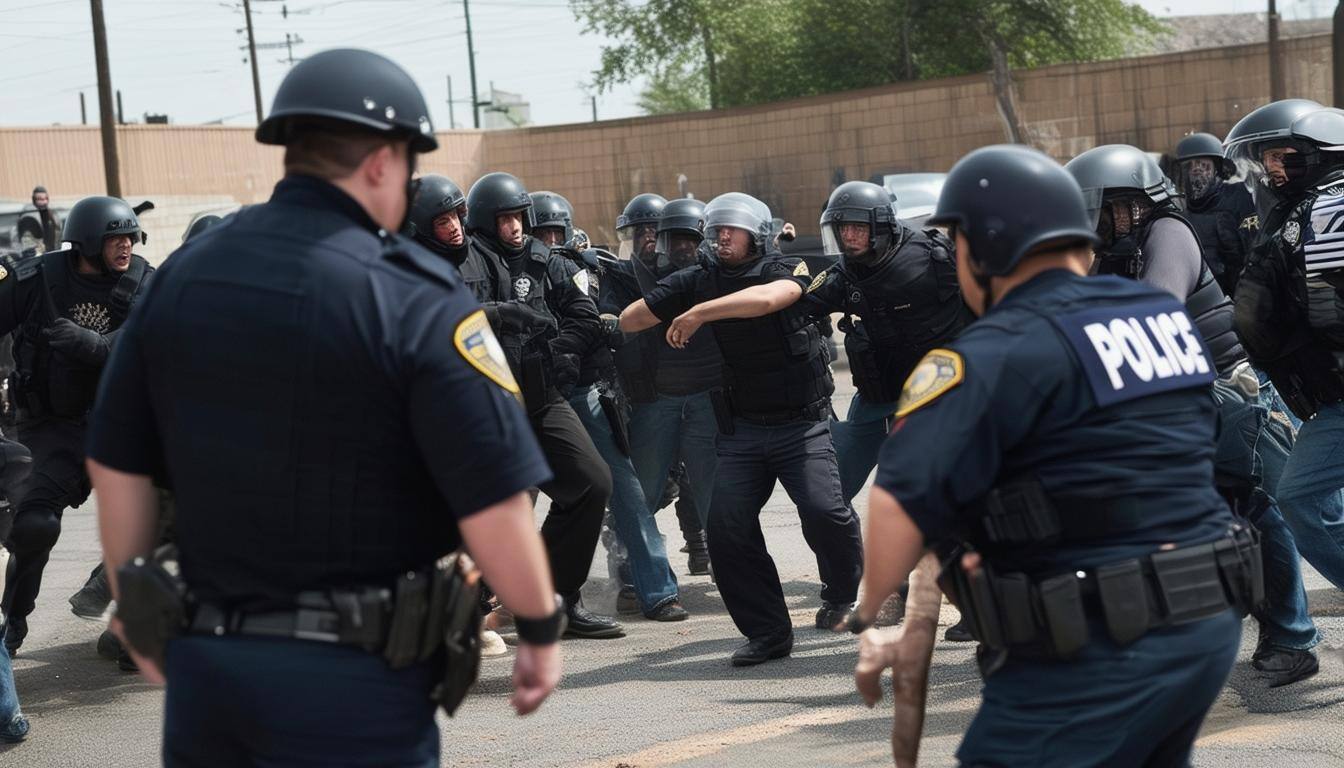This article first appeared in American Police Beat.
America has a rich history of gang activity, as well as a successful law enforcement narrative on dealing with gangs decisively. While many of these gangs are violent and well entrenched in American criminal society, such as the Latin Kings, Crips, Bloods, and others they are facing severe challenges from new ‘competitors.’ The new opponents were founded in the fertile Central American criminal cartels and are bringing their world-renowned tactical brutality and contempt for law and order with them as they stake a claim in the United States. An increase in narcotics-related violent crime should be anticipated by law enforcement agencies at a federal, state, and local level. What are their mitigation options?
America is a soft target
The Central American gangs are capitalizing on the porous southern border, overwhelmed customs and border patrol officers, and a swamped immigration system that can’t keep up. For gangs with cash to spend, bringing people, weapons, and narcotics into the country is relatively straightforward.
The Central American gangs are, therefore, brazenly carving out new markets for themselves in America. Among these are El Salvador’s Mara Salvatrucha (MS-13) and the latest, Tren de Aragua from Venezuela.
The current administration is aware of the problem. Its latest attempt to address the underlying factors of ‘irregular migration’ was an additional $5.4 million donation in 2023 to the Gang Resistance Education And Training (GREAT) program in Guatemala. The US has funded the program since 2010, with questionable results.
The porous border is an open invitation to the cartels controlling these gangs. In addition, progressive policies in certain American cities are the cherry on the cake as they see hamstrung law enforcement and ineffective courts as a golden opportunity for profiteering.
Violence and corruption are part of growing up in Central America. The police and courts are compromised, and the only role models’ young people have had are the narcotics kingpins and their enforcers. Crime pays, and people grow up with a deep contempt for law enforcement and the view that crime and violence are the answer.
This violent and brutal approach does not suddenly change when they enter the USA. They bring their worldview with them, and the gangs take advantage by offering a healthy income, as much as up to $700 per day for selling narcotics. The offer becomes irresistible when the ‘new recruits’ know they are unlikely to be arrested in certain cities.
Violence in the inner city
The established American gangs should not be underestimated. While the Central American cartels are setting up their gangs in America, they will soon come into conflict with homegrown organizations. The result will be an escalation of inner-city violence. Both sides will rapidly move to recruit and arm more people, with even more violence and brutality as a consequence.
While gangs make profits from a range of illegal activities, from human sex trafficking to weapons smuggling, narcotics is their most profitable business option. The fentanyl epidemic is proof of this, with more than 112,000 fentanyl-related deaths recorded in the USA in 2023, excluding other narcotics and fatalities due to violence.
The Central American gangs will capitalize on America’s addiction and open new fentanyl supply chains. This market presence and expansion will be one of the critical drivers for violence. Established American gangs will fight to protect their customers, turf, and profitability.
The fentanyl problem is so critical that Texas Governor Greg Abbott signed a new law to increase the criminal penalties for fentanyl distribution, including permitting murder charges in connection with fentanyl-related deaths. Florida Governor Ron DeSantis recently also signed a law to protect first responders exposed to fentanyl and other narcotics.
Mitigating inner-city violent gang activity
Dealing with the growing gang threat is not a simple exercise, but American authorities can make use of tactics from the past and adapt them to today’s realities.
From a federal perspective, the open border must be addressed and secured through an integrated approach to degrade the cartels’ supply chains. Progressive policies in cities need to be updated to aggressively focus on removing narcotics, dealers, and traffickers from the streets. Prosecutors must take a tougher stance on violent crime.
Dealing with inner city challenges requires integrating different law enforcement apparatus to form a cohesive front against the cartels. The integrated task force must operate on intelligence gathered from all sources available, whether police informants or other intelligence-gathering operations. Avoiding the siloed approach, where different departments find themselves alone in a battle without support, is critical.
Another strategy that must be implemented is ‘Broken Windows Policing,’ initially developed in 1982 and made famous in the 1990s by New York City police commissioner William Bratton and Mayor Rudy Giuliani. Broken Windows Policing is a law enforcement approach that focuses on minor crimes to create an atmosphere of law and order.
While this may not appear to be a logical way to deal with gang violence, William Bratton writes that detaining people for subway fare evasion in the 1990s (a crime worth $1.15 at the time) had tremendous results. One out of every seven people arrested had an outstanding warrant, often for severe crimes like murder and rape. Additionally, one out of every twenty-one fare evaders carried a weapon, ranging from straightedge razors to Uzi submachine guns.
The result was that crime rates declined, and by 2013, New York only needed half the number of police officers due to a crime reduction.
This strategy will not be the silver bullet that ends aggressive gang activities, nor will it negate other law enforcement work. However, it will serve as a force multiplier to support the battle against the cartels as part of an integrated strategy and assist in degrading them. Additionally, undercover investigations will form the backbone of intelligence gathering, providing invaluable information for future actions.
Other tactics to assist this integrated approach include visible policing in high-crime areas and communicating with the communities affected by gang activities. Being present and available will turn the police officer into an ally and not an enemy of citizens, and together, they can improve their neighborhoods and create better futures for all.
Moreover, prosecutors are critical to law enforcement efforts. Police officers must be tasked with arresting lawbreakers, and they need the assurance that the prosecutorial process will work to support them with aggressive prosecutions that result in convictions and appropriate sentences.
Society wins when gangs lose
The Central American gang expansion into the United States will continue to pose a severe challenge for our law enforcement departments. Their criminal activities will create more substance addiction and social challenges. To effectively deal with the issue, we need to go back to the source and shut down all the avenues they have to operate in America and apply integrated and vigorous policing without compromise.
In America’s cities, progressive policies should focus on helping people with an addiction, not reducing the effectiveness of law enforcement and prosecutors. Aggressive enforcement and prosecution to stop cartel members and to protect civilians is non-negotiable.
The contempt for life and law, which gang members import from Central America, makes a soft, progressive approach laughable. It is also an open invitation to them to import their brutality and turn America’s cities into narco-cities where cartels rule, authorities are corrupted or intimidated, and civilians become permanent victims.
American policing must meet this gang challenge head-on.
Views expressed in this interview are opinions of the author, and do not necessarily reflect the views of Rigaku Analytical Devices.



